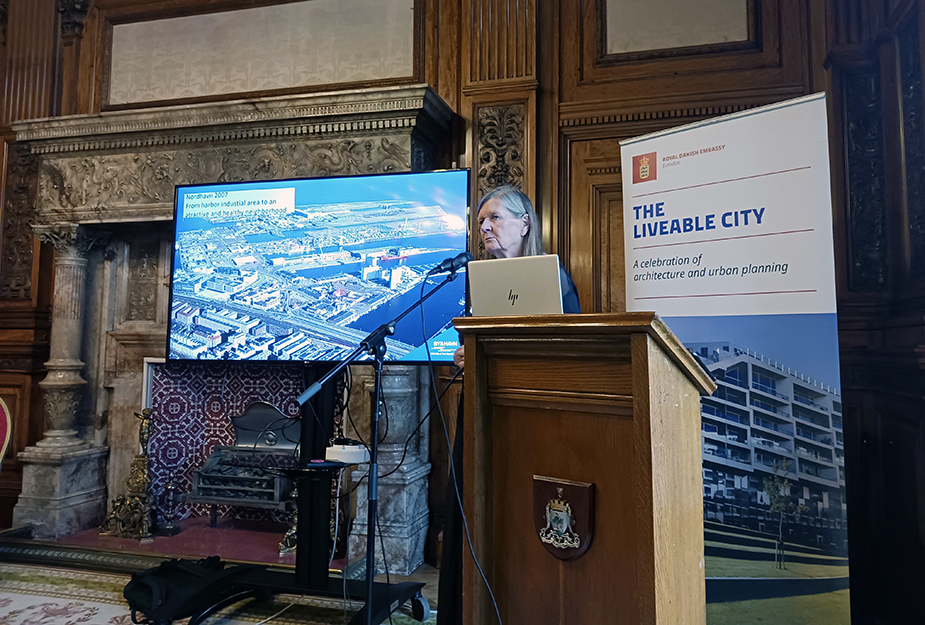Designing healthier cities: a Danish-Scottish dialogue

(13 November) Architecture and Design Scotland’s Director of Design, Heather Claridge, reflects on her recent session at the Liveable City conference series hosted by the Danish Embassy on how urban design can positively impact public health.
At Architecture and Design Scotland, we believe that good design and place-based thinking are of national importance to people’s health, wellbeing and productivity. We also believe in the value of sharing learning from others about which design approaches work in different settings.
We were delighted that our Director of Design, Heather Claridge, had the opportunity to moderate a session at the Liveable City event in Glasgow, hosted by the Danish Embassy/Demark in the UK in November 2024. Here, Heather reflects on her session and shares her key takeaways.
Impact of the built environment on our health and wellbeing
As an urban planner and designer with experience in some of the most deprived communities in Scotland, I have witnessed the profound impact our built environment has on our health and wellbeing. It is clear that where we live significantly influences our quality of life, with urban living conditions often shaping our future health more than genetics.
This is why the focus on “Healthy Buildings, Healthy Cities” at the recent Liveable City session was so crucial. As urban populations continue to grow, it is imperative that we design cities that prioritise health and wellbeing.
Poorly designed urban environments can contribute to health inequalities through factors like inadequate housing, pollution, limited public services, inactive lifestyles, and stress. Additionally, social isolation and loneliness, particularly among older populations, are emerging as major public health concerns. However, urban design can be a powerful tool for positive change. By creating vibrant, inclusive, and resilient cities, we can improve people's health and well-being.
The importance of indoor and outdoor environments
The session brought together experts from Denmark and Scotland to share insights and best practices. A key takeaway was the importance of indoor environmental quality. With a staggering 90% of our lives spent indoors, the quality of natural light and air we breathe has a significant impact on our health.
Outdoor spaces also play a crucial role in promoting wellbeing. Access to green space and opportunities for physical activity can reduce stress, improve mental health, and boost physical activity levels. By incorporating green infrastructure into urban design, we can create cities that are not only beautiful but also beneficial for our health.
A holistic approach to urban planning
It is also essential to take a holistic approach to urban planning. By designing buildings and neighbourhoods with health in mind, we can create environments that foster wellbeing and reduce healthcare costs – supporting a prevention approach. This includes factors such as access to healthy food, safe transportation options, and opportunities for social interaction.
Learning from Danish experiences
The Danish perspective, as shared by Rita Justesen from the Copenhagen Development Agency, offered valuable insights into the Scandinavian approach to urban development. Denmark's focus on sustainability, social equity, and human-centred design has resulted in some of the most liveable communities in the world.
By learning from Danish experiences, we can strive to create similar outcomes in our cities.
This Danish-Scottish dialogue was a testament to the power of international collaboration. By sharing knowledge and best practices, we can accelerate progress towards healthier, more sustainable, and equitable cities. Prioritising public health and wellbeing can help us build better now and for future generations to come.
Header image: Rita Justesen from the Copenhagen Development Agency credited to Architecture and Design Scotland
